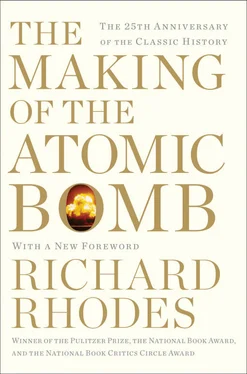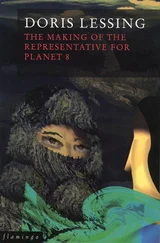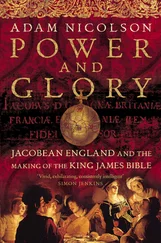Back in Leningrad the following year Gamow received notice from his government that he was officially delegated to the Solvay Conference. “I could not believe my eyes,” he writes in his autobiography. 737It was an easy way out of the country—except that Rho had not been included. Gamow determined to acquire a second passport or defiantly stay home. Through the Bolshevik economist Nikolai Bukharin, whom he knew, he arranged an interview with Party Chairman Vyacheslav Molotov at the Kremlin. Molotov wondered that the theoretician could not live for two weeks without his wife. Gamow feigned camaraderie:
“You see,” I said, “to make my request persuasive I should tell you that my wife, being a physicist, acts as my scientific secretary, taking care of papers, notes, and so on. So I cannot attend a large congress like that without her help. But this is not true. The point is that she has never been abroad, and after Brussels I want to take her to Paris to see the Louvre, the Folies Bergère, and so forth, and to do some shopping.” 738
That Molotov understood. “I don’t think this will be difficult to arrange,” he told Gamow.
When the time arrived to collect the passports Gamow found that Molotov had changed his mind, preferring not to set an awkward precedent. Gamow stubbornly refused to cooperate. The passport office called him three times to pick up his passport and three times he insisted he would wait until there were two. The fourth time “the voice on the telephone informed me that both passports were ready. And indeed they were!” (After the conference the young defectors sailed to America. 739Gamow taught at the University of Michigan’s summer school in pleasant Ann Arbor and from there moved to accept a professorship at George Washington University in Washington, D.C.)
The Solvay Conference, devoted for the first time to nuclear physics, drew men and women from the highest ranks of two generations: Marie Curie, Rutherford, Bohr, Lise Meitner among the older physicists; Heisenberg, Pauli, Enrico Fermi, Chadwick (eight men in all from Cambridge and no one from devastated Göttingen), Gamow, Irene and Frédéric JoliotCurie, Patrick Blackett, Rudolf Peierls among the younger. Ernest Lawrence, his cyclotron humming, was the token American that year.
They debated the structure of the proton. Other topics they discussed may have seemed more far-reaching at the time. None would prove to be. On August 2, 1932, working with a carefully prepared cloud chamber, an American experimentalist at Caltech named Carl Anderson had discovered a new particle in a shower of cosmic rays. The particle was an electron with a positive instead of a negative charge, a “positron,” the first indication that the universe consists not only of matter but of antimatter as well. (Its discovery earned Anderson the 1936 Nobel Prize.) Physicists everywhere immediately looked through their files of cloud-chamber photographs and identified positron tracks they had misidentified before (the Joliot-Curies, who had missed the neutron, saw that they had also missed the positron). The new particle raised the possibility that the positively charged proton might in fact be compound, might be not a unitary particle but a neutron in association with a positron. (It was not; there proved not to be room in the nucleus for electrons positive or negative.)
After they had identified the positrons they had missed before, the Joliot-Curies had started up their cloud chamber again and looked for the new particle in other experimental arrangements. They found that if they bombarded medium-weight elements with alpha particles from polonium, the targets ejected protons. Then they noticed that lighter elements, including in particular aluminum and boron, sometimes ejected a neutron and then a positron instead of a proton. That seemed evidence for a compound proton. They presented their evidence with enthusiasm as a report to the Solvay Conference.
Lise Meitner attacked the Joliot-Curies’ report. She had performed similar experiments at the KWI and she was highly respected for the cautious precision of her work. In her experiments, she emphasized, she had been “unable to uncover a single neutron.” 740Sentiment favored Meitner. “In the end, the great majority of the physicists present did not believe in the accuracy of our experiments,” Joliot says. “After the meeting we were feeling rather depressed.” Fortunately the theoreticians intervened. “But at that moment Professor Niels Bohr took us aside… and told us he thought our results were very important. A little later Pauli gave us similar encouragement.” 741The Joliot-Curies returned to Paris determined to settle the issue once and for all.
Husband and wife were then thirty-three and thirty-six years old, with a small daughter at home. They sailed and swam together in summer, skied together in winter, worked together efficiently in the laboratory in the Latin Quarter on the Rue Pierre Curie. Irene had succeeded her mother as director of the Radium Institute in 1932: the long-widowed pioneer was mortally ill with leukemia induced by too many years of exposure to radiation.
It seemed likely that the appearance of neutrons and positrons rather than protons might depend on the energy of the alpha particles attacking the target. The Joliot-Curies could test that possibility by moving their polonium source away from the target, slowing the alphas by forcing them to batter their way through longer ranges of air. Joliot went to work. Without question he was seeing neutrons. When he shifted the polonium away from the aluminum-foil target “the emission of neutrons [ceased] altogether when a minimum velocity [was] reached.” But something else happened then to surprise him. 742After neutron emission ceased, positron emission continued—not stopping abruptly but decreasing “only over a period of time, like the radiation… from a naturally radioactive element.” What was going on? Joliot had been observing the particles with a cloud chamber, catching their ionizing tracks in its supersaturated fog. Now he switched to a Geiger counter and called in Irene. As he explained to a colleague the next day: “I irradiate this target with alpha rays from my source; you can hear the Geiger counter crackling. I remove the source: the crackling ought to stop, but in fact it continues.” 743The strange activity declined to half its initial intensity in about three minutes. They would hardly yet have dared to think of that period as a half-life. It might merely mark the erratic performance of the Geiger counter.
A young German physicist who specialized in Geiger counters, Wolfgang Gentner, was working at the institute that year. Joliot asked him to check the lab instruments. The couple went off to a social evening they could find no excuse to avoid. “The following morning,” writes the colleague to whom Joliot spoke that day, “the Joliots found on their desk a little hand-written note from Gentner, telling them that the Geiger counters were in perfect working order.” 744
They were nearly certain then that they had discovered how to make matter radioactive by artificial means.
They calculated the probable reaction. An aluminum nucleus of 13 protons and 14 neutrons, capturing an alpha particle of 2 protons and 2 neutrons and immediately re-emitting 1 neutron must be converting itself into an unstable isotope of phosphorus with 15 protons and 15 neutrons (13 + 2 protons = 15; 14 + 2 - 1 neutrons = 15). The phosphorus then probably decayed to silicon (14 protons, 16 neutrons). The 3-minute period was the half-life of that decay.
They could not chemically trace the infinitesimal accumulation of silicon. Joliot explained why in 1935, when he and his wife accepted the Nobel Prize in Chemistry for their discovery: “The yield of these transmutations is very small, and the weights of elements formed… are less than 10 -15[grams], representing at most a few million atoms”—too few to find by chemical reaction alone. 745But they could trace the radioactivity of the phosphorus with a Geiger counter. If it did indeed signal the artificial transmutation of some of the aluminum to phosphorus, they should be able to separate the two different elements chemically. The radioactivity would go with the new phosphorus and leave the untransmuted aluminum behind. But they needed a definitive separation that could be carried out within three minutes, before the faint induced radioactivity faded below their Geiger counter’s threshold.
Читать дальше












